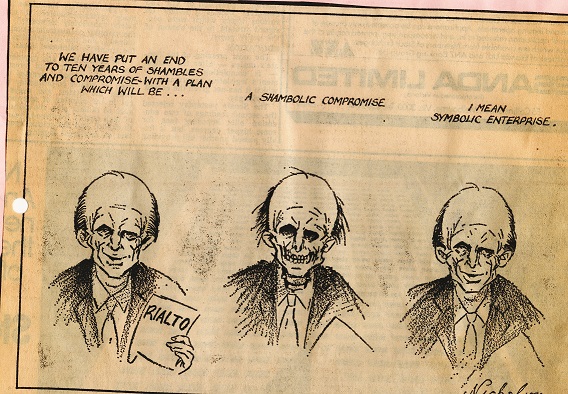After years of debate and campaigning, a final compromise was reached in the early 1980s.
After succesful opposition to an application to demolish the impressive rear wing of the Rialto, in 1980 National Mutual sold everything west of the Winfield to the Grollo Group. The new owners planned a pair of high rise office towers and, despite previous planning difficulties, within 12 months had reached a compromise with the State Government. This saw the Rialto, with rear wings retained, combined with the Winfield to become an atrium-style hotel. While the King Street warehouses were spared, Robb’s Building was sacrificed to allow a plaza for the development of the Rialto office tower, then the tallest in Australia. The front portions of the Olderfleet Building and the two remaining buildings in the streetscape were retained, with a low office development built behind in 1985.
Click here for more










